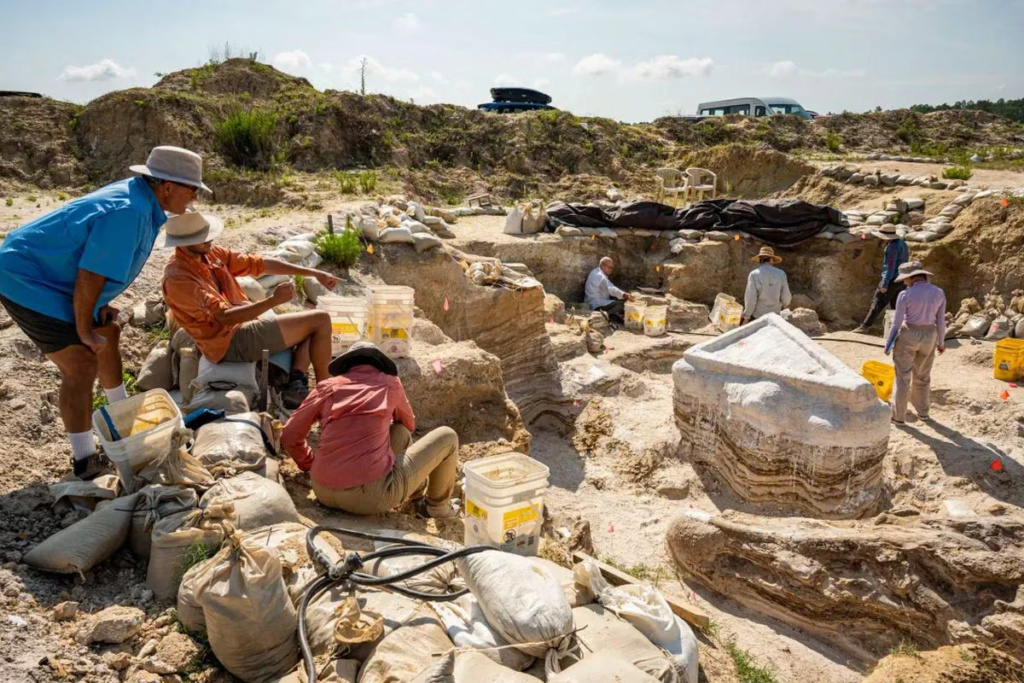5.5 Million Year Old 'Elephant Graveyard' Discovered

The skull of the adult gomphothera - Photo credit: Kristen Grace / Florida Museum
Paleontologists have made a huge discovery in Florida in the United States. They came across a graveyard of elephants that have been dead for 5.5 million years. Several whole skeletons have already been exhumed.
It's not every day that you discover elephant cemeteries and even less when they are almost 6 million years old. Let us first recall that the cemetery of elephants is a myth that has fascinated us for a long time. The discovery of pachyderm bones grouped together in the same place in Africa has given rise to this popular belief that elephants group together in the same place before they die.
According to scientists, these elephant cemeteries are simply places frequented by old, diminished elephants who live near sources of water and food before dying in the same place. Paleontologists have just discovered a new "elephant cemetery" in Florida, United States. This cemetery was along what used to be a prehistoric river. More specifically, it is the Montbrook excavation site near Gainesville.

These elephants that disappeared millions of years ago were gomphotheres
The fossils discovered do not come from elephants strictly speaking, but from gomphotheres. It is an extinct family of animals that resembled elephants with their trunks and tusks. Originating in Asia, they reached South America at the end of the Pleistocene before the disappearance of the species. They are therefore not the same animals that our cousin species Neanderthal hunted to collect meat and fat.
As paleontologists have explained, the impressive animals in this cemetery died 5.5 million years ago during the Miocene, just before the Pleistocene. This real paleontological treasure was discovered for the first time in 2022. The first bones had then been discovered until paleontologists recently unearthed whole skeletons.
" It was very exciting because it gave us the opportunity to not only see what an adult [gomphothera] would have looked like, but also to very carefully document every bone in its skeleton, " says Jonathan Bloch, curator of paleontology. vertebrates at the Florida Museum of Natural History.
It is the largest adult gomphothere ever discovered to date.
In total, paleontologists managed to recover entire skeletons of an adult gomphothere and at least seven juvenile specimens. The adult skeleton has also broken the record for the largest gomphothere ever discovered to date. According to scientists, this adult gomphothere measured about 2.4 meters at the withers for 2.7 meters in length.

As Dean Warner, a retired chemistry teacher and volunteer, recalls, “ I started encountering toe and ankle bones one after another. As I continued to dig, what turned out to be the ulna and radius began to appear . Not only were the bones of these ancient elephants huge compared to previous discoveries, but they were also arranged in a way that suggests the animal was already lying down before it died.
The ancient elephants did not all die at the same time in this "cemetery"
Paleontologists have also confirmed that the gomphotheres discovered did not all die at the same time. They probably disappeared a few hundred years apart. It would even seem that the adult drowned on the spot while the bodies of the juveniles were deposited there by the current of the river.
This exciting discovery will help paleontologists and researchers better understand gomphotheres, their way of life and the environments in which they lived. For the curious and passionate about paleontology, the skeleton of the adult gomphothere will soon be exhibited alongside the mammoth at the Florida Museum of Natural History.
Source : Florida Museum

